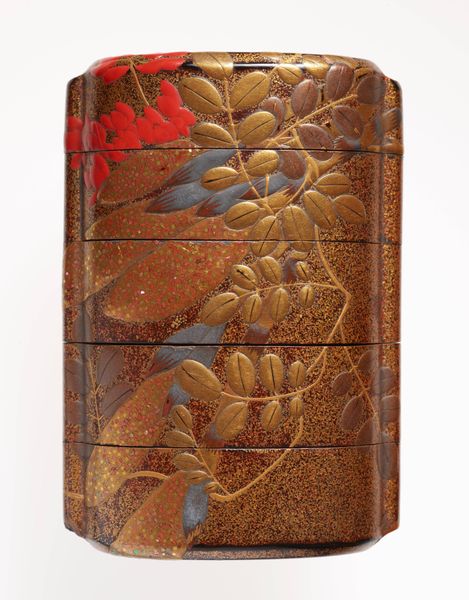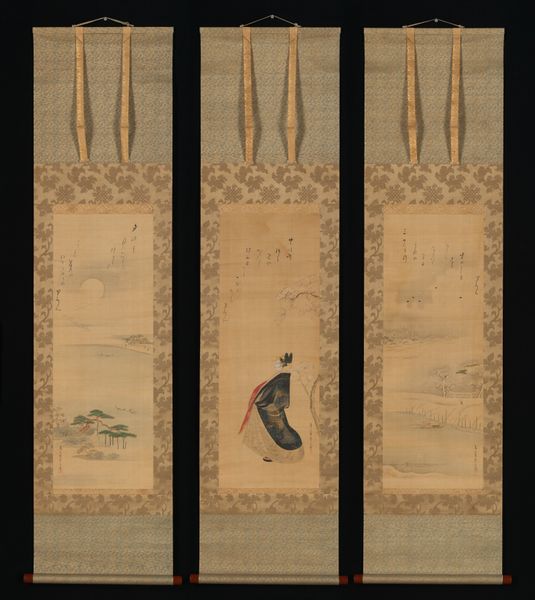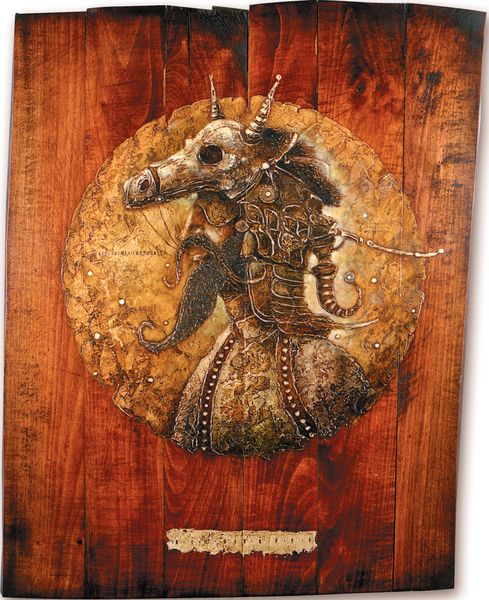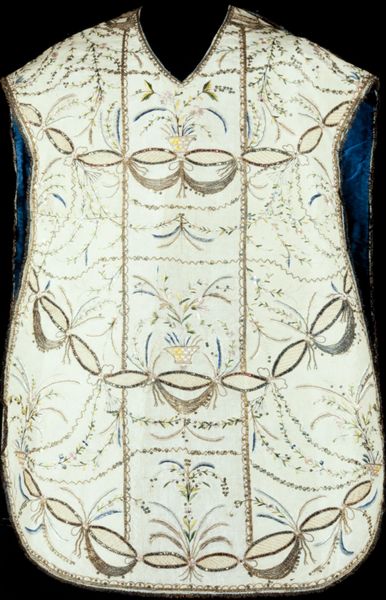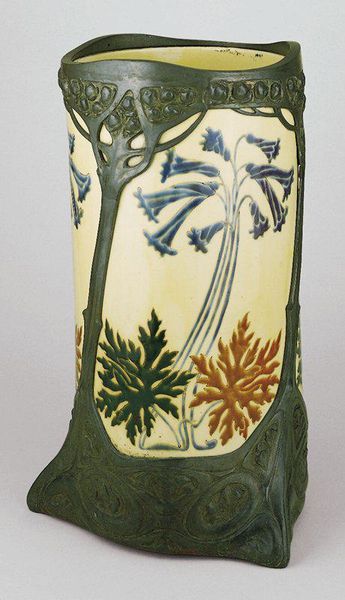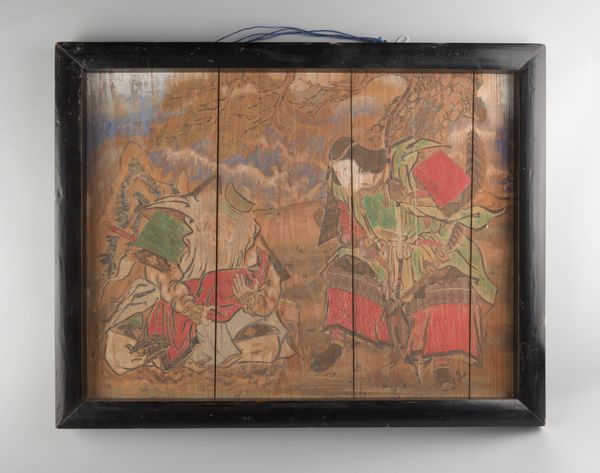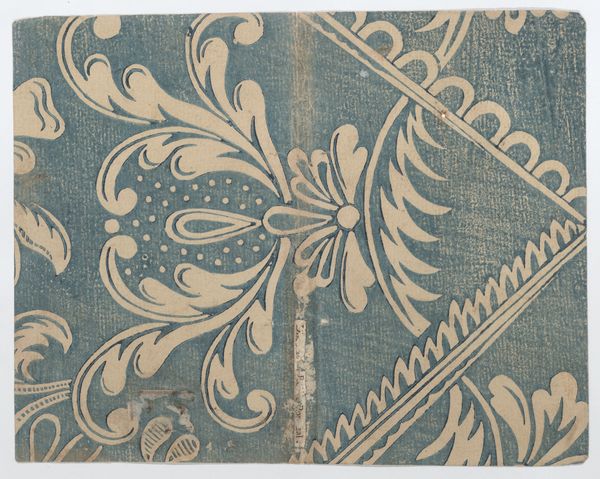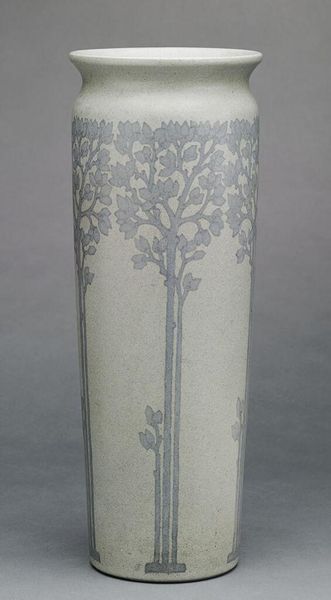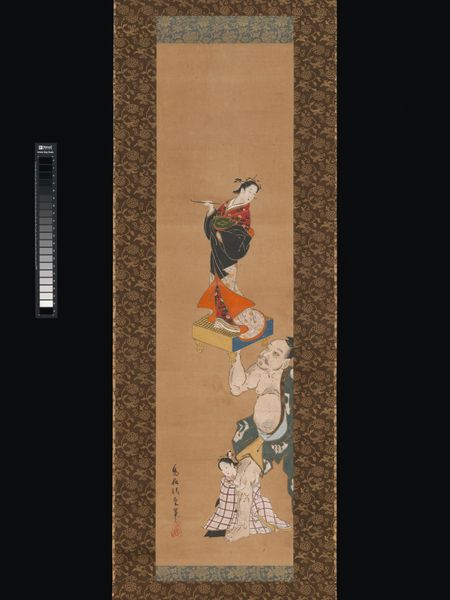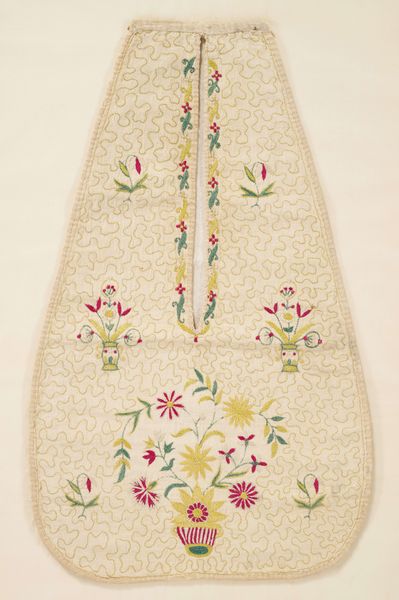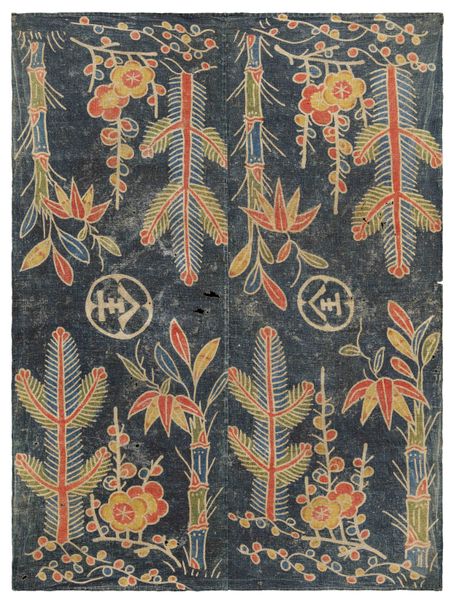
Case (Inrō) with a Fox from the Kyōgen Play The Fox Hunter (Tsurigitsune); Hunter behind Haystacks from the Kyōgen Play "Hakuzōsu" (reverse) 19th century
0:00
0:00
mixed-media, wood
#
mixed-media
#
narrative-art
#
sculpture
#
asian-art
#
japan
#
figuration
#
men
#
24_meiji-period-1868-1912
#
wood
#
mixed media
#
miniature
Dimensions: 3 11/16 x 2 1/16 x 1 1/8 in. (9.4 x 5.2 x 2.9 cm)
Copyright: Public Domain
Editor: So, this is a 19th-century mixed-media case (inrō) by Shibata Zeshin, currently held at The Met. One side depicts a fox and the other a hunter. There is an interesting dark color palette with gold elements throughout. The scenes remind me of miniature theater sets! How do you interpret Zeshin’s storytelling in this piece? Curator: Indeed! Zeshin packs a visual punch into this tiny inrō, drawing directly from Kyōgen theater, a kind of comedic interlude in Noh plays. What strikes me is the interplay between reality and illusion. On one side, we have a fox disguised as a priest from the play "The Fox Hunter", and on the reverse, a hunter. Editor: Disguise is such a core element. How does Zeshin capture that duality through the materials and techniques he uses? Curator: That's perceptive! Zeshin was a master of lacquer techniques and skillfully used varied metal and textured grounds, blurring the line between painting and sculpture. Think about it: he’s using mixed media to portray figures engaged in deceptive behavior, enriching the storytelling beyond the depicted scenes! Do you feel the somber tones enhance the dramatic tension? Editor: Absolutely. They give it a kind of haunting quality. Knowing these are scenes from plays also contextualizes the design. It reminds me to always look beyond what is on the surface. Curator: Precisely! And isn't that what all good art—and theater—should inspire? The inrō whispers secrets and invites us to consider hidden motives within narratives, reflecting perhaps also upon human psychology.
Comments
No comments
Be the first to comment and join the conversation on the ultimate creative platform.
